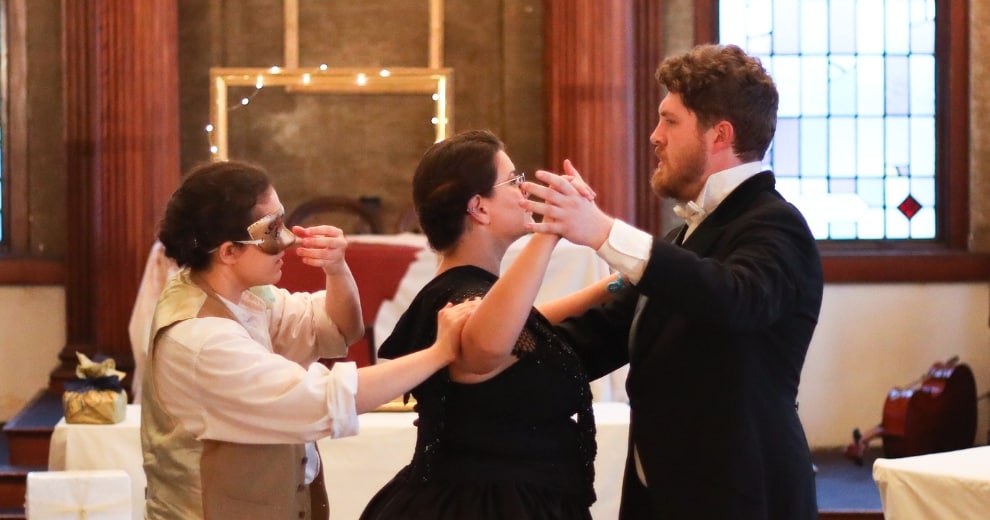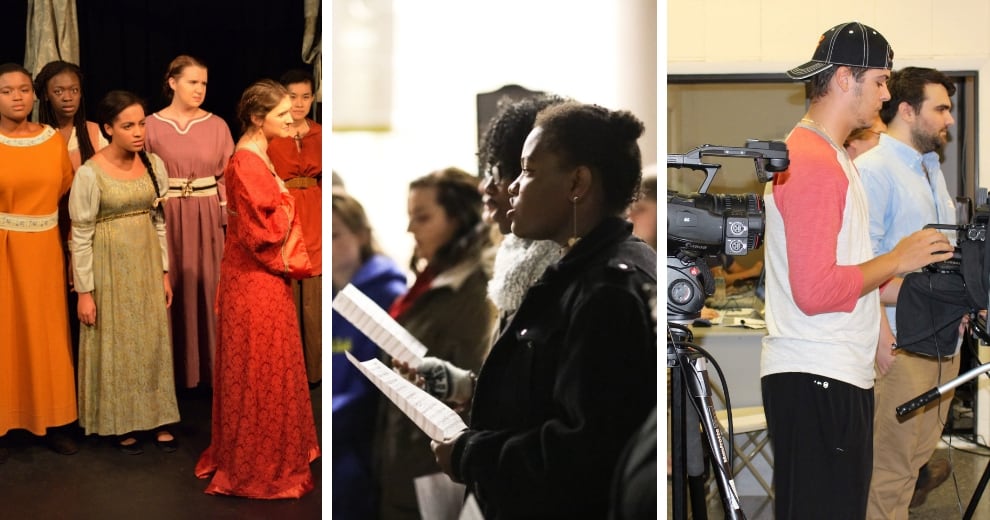When first-year students start college at MBU, one of the first events bringing them together with their new #MBUfamily is a show at the Blackfriars Playhouse. It’s an immediate and powerful introduction to the arts. And it illustrates a deeply held belief at Mary Baldwin that the arts, and the way of thinking created by the arts, matter.
Continuing MBU’s momentum to provide educational experiences and programs that best prepare students to be tomorrow’s leaders, the university recently announced that it is moving from four academic colleges to five.
The new College of Visual and Performing Arts will bring together undergraduate programs including theater, music, film, dance, studio art, art history, and arts management, along with the Shakespeare and Performance graduate program. The college officially launched at the beginning of spring semester on January 7, 2019.
The new college will reinvigorate traditional arts disciplines and highlight new interdisciplinary opportunities for students to enrich their studies and their personal and professional lives with the arts, including creative literacy and expression, “artivism,” and collaboration.

Paul Menzer, professor and director of the Shakespeare and Performance program, will serve as the inaugural dean of the College of Visual and Performing Arts. He was also chair of the faculty and student task force that initially explored the new college’s feasibility.
One of the main advantages of the new college is its approachable scale: students can seize opportunities to perform, exhibit, and make art from day one.
“I hope that the new college will foster a community of artistic support, cross-disciplinary promotion, and collaboration,” said Alexandra Stroud, a graduate student in the Shakespeare and Performance program, and directing assistant at the American Shakespeare Center. “I find that when another artistic practitioner has his or her eye on your work it encourages you to do the best you can and your art only prospers by it.”
And that kind of engagement can yield powerful results. All MBU arts students enjoy a local or regional internship, and in recent years nearly 100 percent of arts graduates either work in the field within a year of graduation or enter a master of fine arts or doctoral program.

The formation of the new college continues a long and proud tradition of the arts at MBU. Co-founder Rufus Bailey considered the study of music vitally important to lives well-lived and an ethical society. Mary Julia Baldwin created a conservatory of music in 1871. Professors instill a lifelong devotion to the arts for generations of students, including such pioneering figures as theatre-makers Fletcher and Margaret Collins, artists Elizabeth Nottingham and Horace Day, and musician Gordon Page, among many others. Lecture series like the Doenges Visiting Artists/Scholars have brought brilliant creative minds to campus to speak and teach. Many alumni, like Abstract Expressionist painter Judith Godwin ’52, have gone on to scintillating careers in the arts after graduating from the university.
“The entire impetus behind this initiative was to spotlight our considerable artistic strengths at MBU, making visible to Staunton and the world our programs in theatre, music, dance, and the visual arts, including film,” said Menzer.
The arts are also at the heart of MBU’s place in the local community. The American Shakespeare Center (ASC) and the Shakespeare and Performance (S&P) program model an ideal partnership in Staunton and for arts communities around the world. MBU and the Beverley Street Studio School also maintain a vibrant working relationship in theatre, music, and visual arts. Talented young string musicians from the Heifetz Institute and young actors from the ASC’s theatre camp spend their summers practicing their art on campus. Community members regularly come to campus for MBU Theatre productions, Hunt Gallery shows, and concert series, and MBU’s public offerings enhance Staunton’s reputation as both a great place to live and a tourist destination.

The university will further enhance its community arts presence through a new rehearsal, performance, and exhibition space in downtown Staunton called MBU @ the Wharf. Located at 19 West Johnson St. beside Pufferbellies, the space will be the new home of the S&P program. S&P previously occupied the fourth and fifth floors of the Masonic Building on Beverley St. for almost 15 years. This addition comes on the heels of the university’s MBA program announced as an anchor tenant in Staunton’s Innovation Hub.
The College of Visual and Performing Arts joins MBU’s existing four colleges: Arts and Sciences, Business and Professional Studies, Education, and the Murphy Deming College of Health Sciences.
Capping a process that began in fall 2017, the faculty voted yes to a fifth college at a faculty meeting last October, and the Board of Trustees unanimously endorsed the decision.
“The entire impetus behind this initiative was to spotlight our considerable artistic strengths at MBU, making visible to Staunton and the world our programs in theatre, music, dance, and the visual arts, including film.”
Paul Menzer, dean of MBU’s new College of Visual and Performing Arts